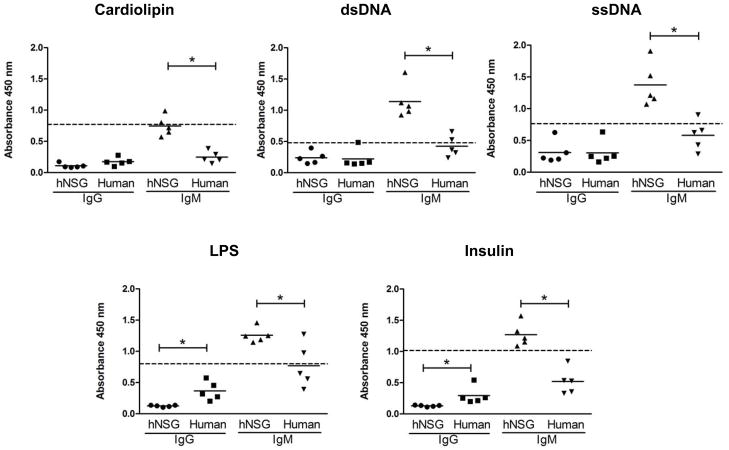Figure 5.
Polyreactivity in the sera of hNSG mice. Sera from 5 hNSG mice at 10 months post engraftment and 5 normal human subjects were tested by ELISA for binding to different antigens as listed above each graph. Antigens were coated on 96 well plates, and each serum sample was tested in two sets of duplicates, each set scored for human IgM or IgG (x-axis) mediated antigen binding using the appropriate detection antibody, i.e. anti-human IgM and anti-human IgG, respectively both conjugated to HRP. All serum samples were used at 1:100 dilution. Total human IgM and IgG content were 10–50 and 100–200 fold higher respectively, in the human sera compared to the hNSG sera. Sera from unengrafted hNSG mice showed no reactivity (not shown). Each dot represents an individual hNSG mouse or human subject as indicated on the x-axis, and a scatter plot along with the mean for each group is shown. The horizontal dashed line represent the level of reactivity by 4E10 IgG (5 μg/ml) used as a positive control. Significant differences in reactivity between data sets as indicated (*p<0.005) were calculated using the Mann-Whitney unpaired t-test.

